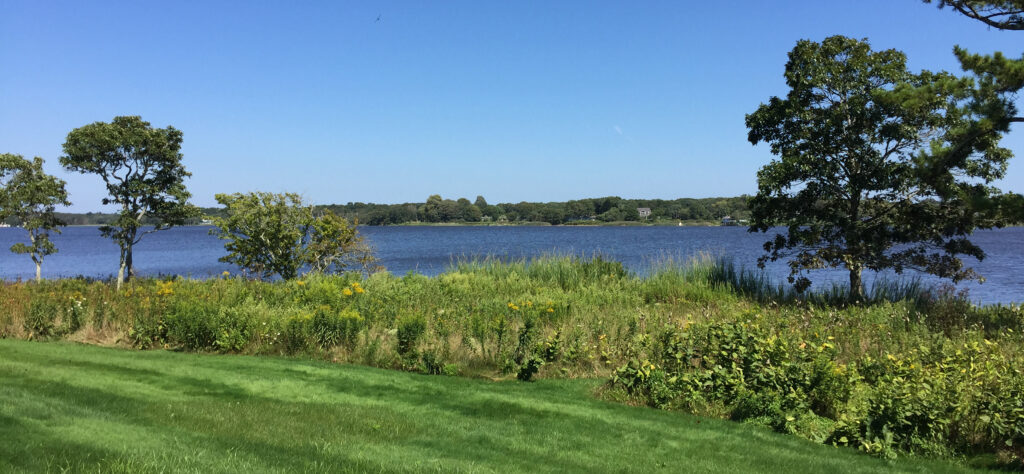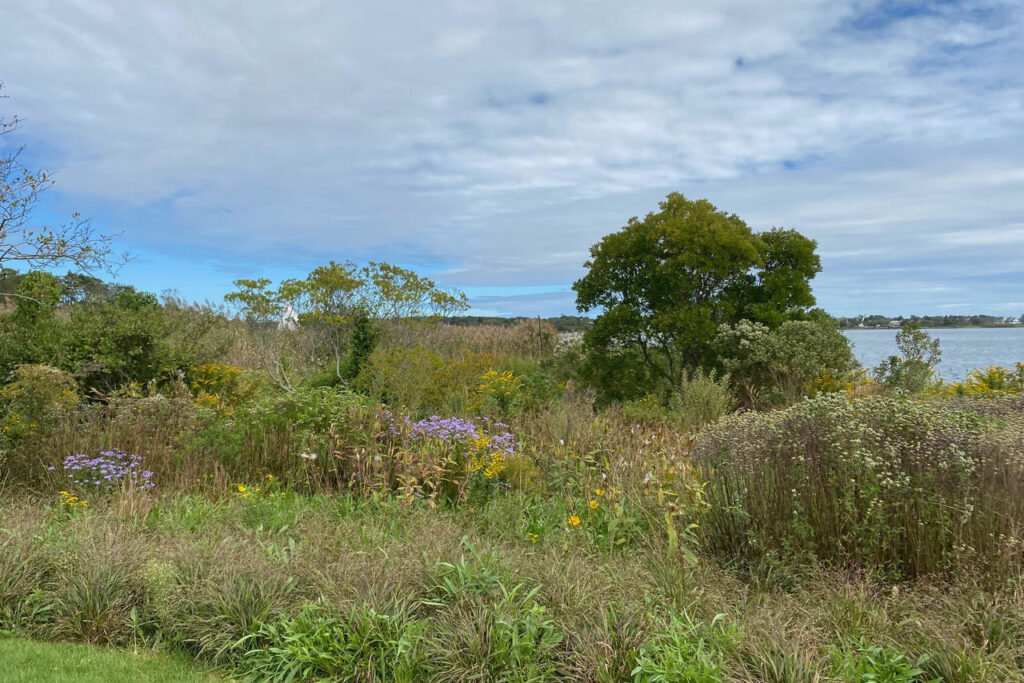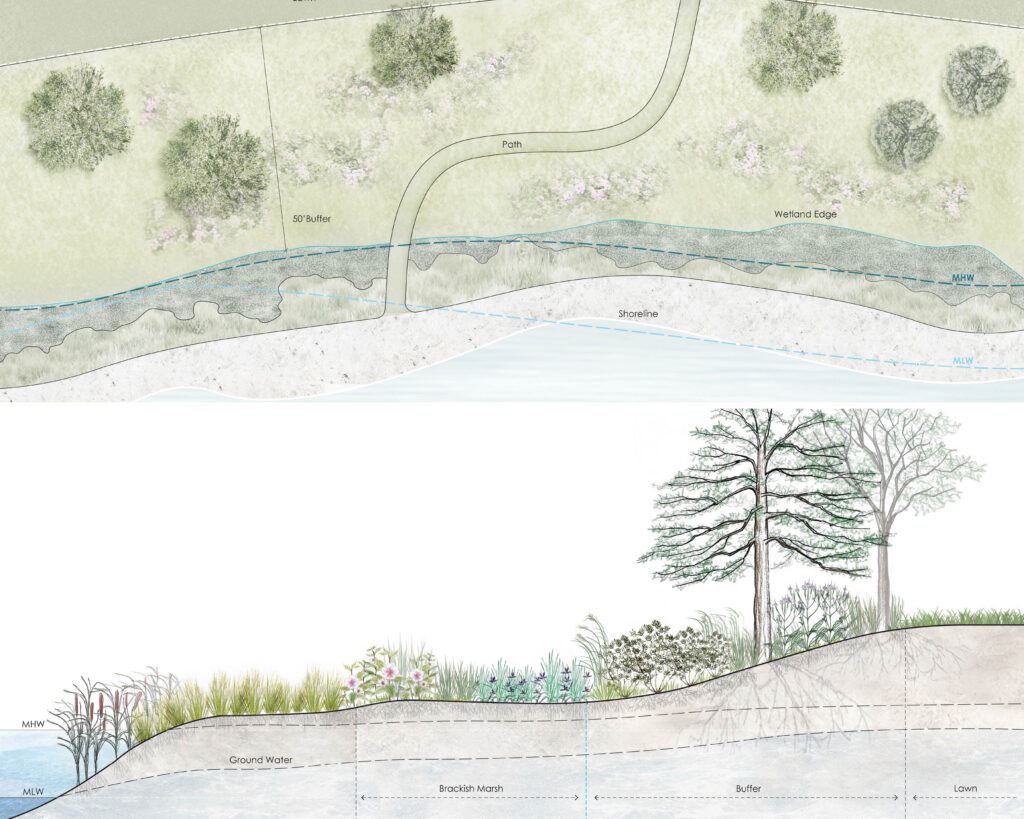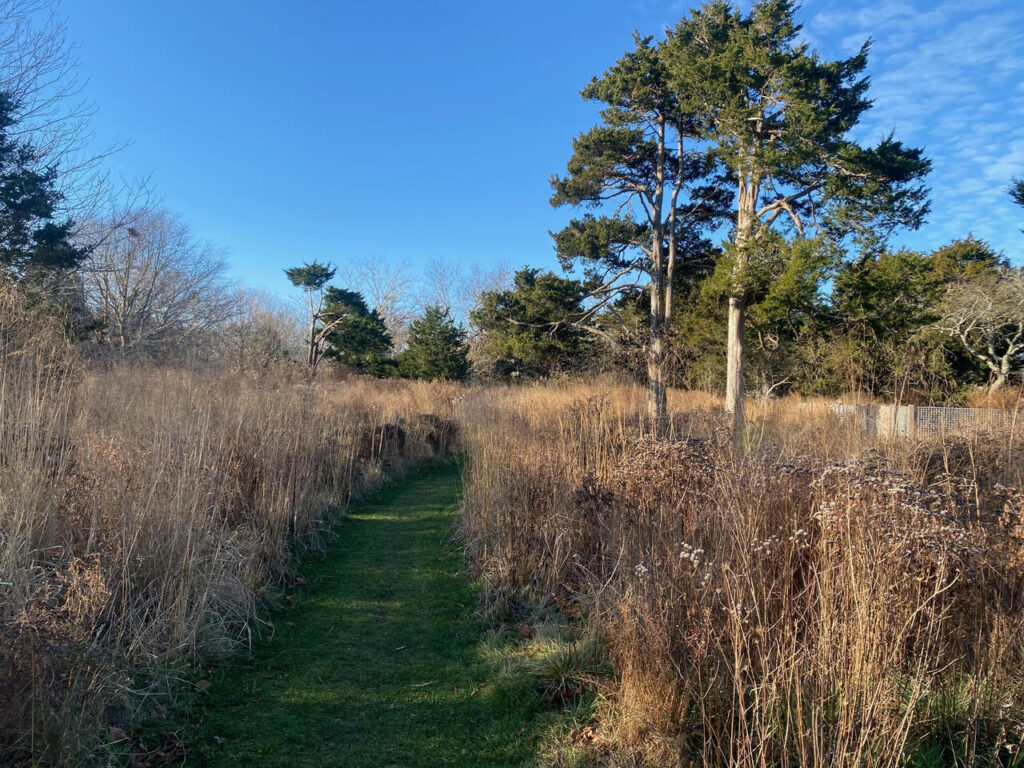
Spring is here and it’s time to get working in the garden. Before you do anything, remember that even though New York and Suffolk County Laws allow homeowners to start fertilizing by April 1. Don’t do it. Plants and lawns are really not growing significantly yet and added fertilizer—high in nitrogen and phosphorus—is likely to wash away in the next rain, right into Georgica Pond. These nutrients are the key triggers for harmful algal blooms later in the season. If you need to fertilize, use a slow-release, organic fertilizer and wait until May when plants are really revving up! The same is true for your irrigation system. Don’t start using it until it is really needed later in the season and read about the new regulations on irrigating lawns issued by the Suffolk County Water Authority.
Instead of fertilizing, why not plan a native plant buffer along your pond shore, wetland, or road frontage. Buffers can absorb runoff (high in nutrients and sediment) before it reaches Georgica Pond.

What is a buffer and why plant one?
A buffer is a zone of native vegetation surrounding a wetland or water body. Buffers help keep our waters clean by filtering nutrients, sediments and contaminants from ground and surface waters before they reach the water body. They also store carbon and keep it out of our atmosphere and contributing to global warming. A buffer is a great addition to a property not only due to its ecological services, but also for what it gives back in beauty and enjoyment. There are other benefits of planting a wetland buffer including:
- Shore stabilization and protection from storms, especially as sea-level rises
- Aesthetic enhancement, softening edges where land meets water
- Increasing native species diversity including pollinators
- Discouraging waterfowl including non-native mute swans and overabundant Canada geese from defecating, nesting, and feeding on lawns
All of the above benefits can be achieved while still maintaining water views.

Nature Does it Best: Emulate a Natural Configuration
Buffers are not gardens. The goal is to create a resilient self-sustaining plant community, that you can enjoy over time. With this in mind, emulating nature will ensure the most success. There is both art and science involved in designing the layout of a buffer. Rather than plants marching in straight rows like a farm crop, a successful buffer requires a plan showing location, species, quantities, and sizes. Species with similar requirements should be planted together. A successful buffer will respond to the existing landscape and will be comprised of big sweeps of plants placed according to their best habitat. “Right plant right place” is the watchword. If possible, a winding rather than straight path to the water should be incorporated into your plans.

According to Abby Clough Lawless, the Principal of Farm Landscape Design “the best buffers are a mix of native grasses, wildflowers and shrubs. While providing their important water quality functions they add beauty to any landscape, formal or informal.”
Happy gardening and watch for our “Homeowner’s guide to Native Plant Buffers” with more details on how to create a buffer coming out later this year.
